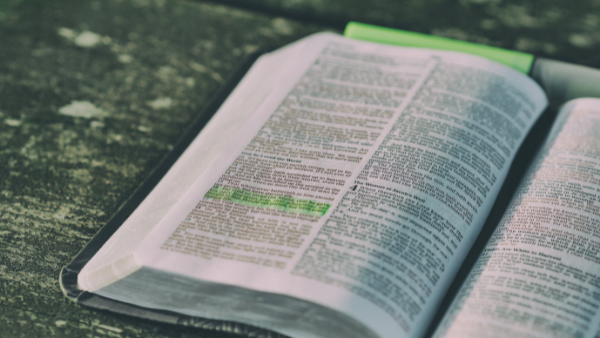By Douglas K. Wilson, Ph.D.
Professor of Biblical Studies, University of Mobile
I AM THE LIGHT
John 8:3–18
In the history of published English Bible translations, John 7:53–8:11 has been included since the beginning. Wycliffe and his followers hand wrote their translation of the New Testament from the Latin Vulgate, which includes this section. The Erasmus Greek New Testament from which Tyndale translated and published the New Testament in 1526 included these verses.
Since the latter 20th century, American publishers have noted the earliest known Greek manuscripts of the New Testament do not include the passage of Jesus’ encounter with the adulterous woman. Even the CSB notes John 7:53–8:11 is not found in the earliest manuscripts.
For the purpose of continuity in the lessons, we include this passage in our commentary.
Trapped (3–6)
John earlier addressed a similar scenario between Jesus and the woman at the well in Sychar. Based on His teaching regarding divorce and remarriage, the Samaritan woman would have been considered an adulteress (Matt. 5:32).
The Torah was clear. Adultery carried the death penalty. The woman was guilty. They knew it. She knew it. But where was her partner? Why didn’t the religious leaders bring him to Jesus for an execution? Both parties were guilty, yet only the woman was brought.
What was their intent? Was it to serve as defenders of the faith and champions for righteousness, or to be religious bullies? The text indicates their intent was to trap Jesus. Their attempt failed.
Freed (7–11)
Jesus was free. He was under no obligation to judge the woman. The accusation against her was incomplete. It required two or three witnesses (Deut. 17:6; 19:15) and the adulterous man to be condemned (Lev. 20:10; Deut. 22:22). Jesus was free to listen to them. He was free to write in the sand. He was free to discern their intentions, which had more to do with Him than her.
Jesus was free not to judge her. He was free to invite a sinless man to cast the first stone, but no one qualified. He was free to watch the older men drop their stones and leave as they understood His point.
After the young men left, Jesus was free to chastise the woman. He showed compassion instead of condemnation. He was free to call the woman to repentance, and He did. “Go, and from now on do not sin anymore.”
Shining (12–18)
In John 6, Jesus revealed Himself as the Bread of Life. Here in John 8, He utilized another metaphor: “I am the Light of the World.” These metaphors pointed back to the Torah, with God’s provision to sustain life during the wilderness wanderings and the light revealed in Genesis 1:4.
The Pharisees attempted to silence Jesus, saying His testimony was invalid and He did not bring reliable witness to affirm His words. Jesus explained the Father was witness to His testimony. He shone in the darkness, as the prophets testified He would.
The remainder of John 8 records increasingly intense interaction between Jesus and the Pharisees. He referred to the Father, and they asked where His Father was, an innuendo that Jesus was born illegitimately. Subtlety led to overt accusation when they said, “We weren’t born of sexual immorality” (v. 41).
Jesus pushed back, saying neither Abraham nor God was their father. Jesus said their father was the devil. By contrast, He was sent from God. Abraham looked forward to His coming. “Before Abraham was, I am.”
That did it. They wanted to kill Jesus immediately. He claimed the name by which God revealed Himself to Moses at the burning bush. These men had no idea who Jesus really was.



Share with others: